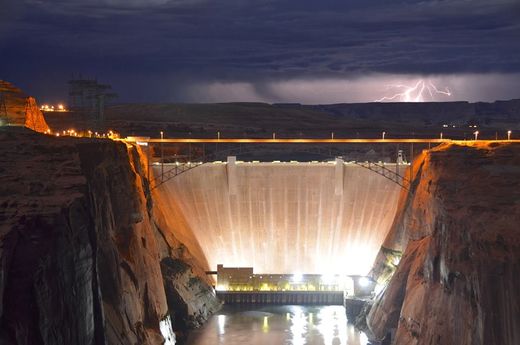|
|
Information
|
|
Reports and Links
|
|
2016
2015
|
Other Stuff
|
- JAWRA_ Loss Rates from Lake Powell and their impact on management of the Colorado River_Tom Myers_feb 20, 2013
- Estimated that more than 14.8 billion cubic meters has been stored in the banks, with a 90% probablility that the value is actually between 11.8 and 18.5 (Gm 3)
- The Colorado River has 73.4 billion cubic meters of available storage in its 10 largest reservoirs (USBR, 2011), which is approximately four times the river's average annual flow.
- Lake Powell loses water from the river system in two ways: to evaporation from the free water surface and bank seepage.
- Bank Seepage is flow to the banks that does not return to the river system whereas bank storage may return to the reservoir or river system.
- Head water snow melt: 96% of Colorado River water comes from above Lake Mead.
- 4% tributary input from Lake Mead to Mexico. (2013 MSCP CTR meeting- TMurphy)
- Q What is the total release (CFS) possible from Glen Canyon Dam?
|
|
